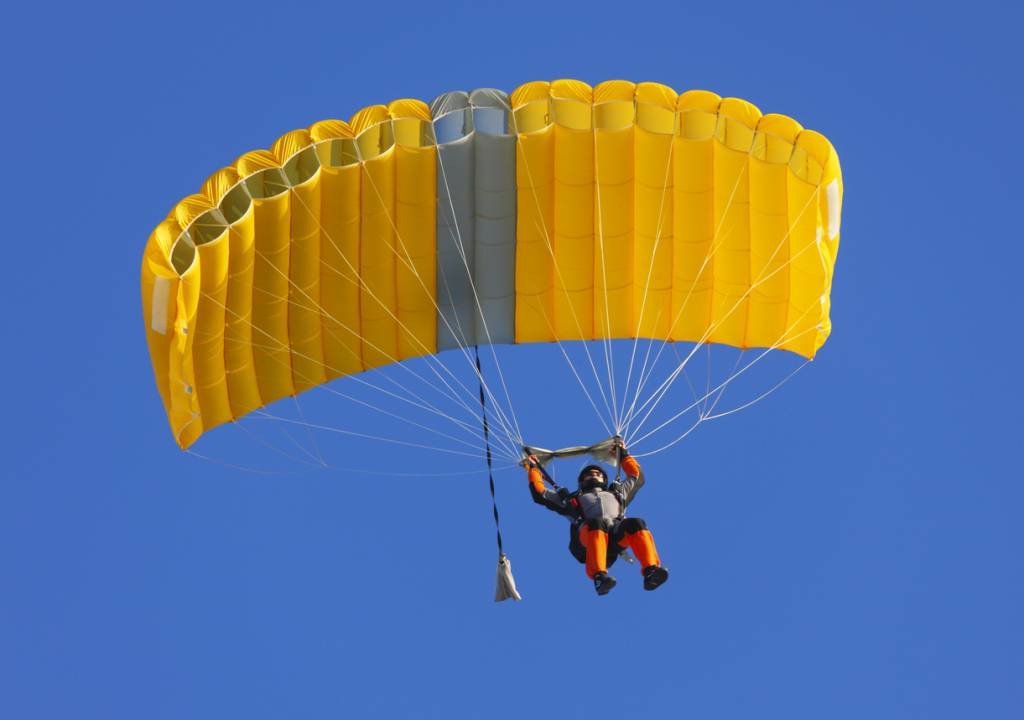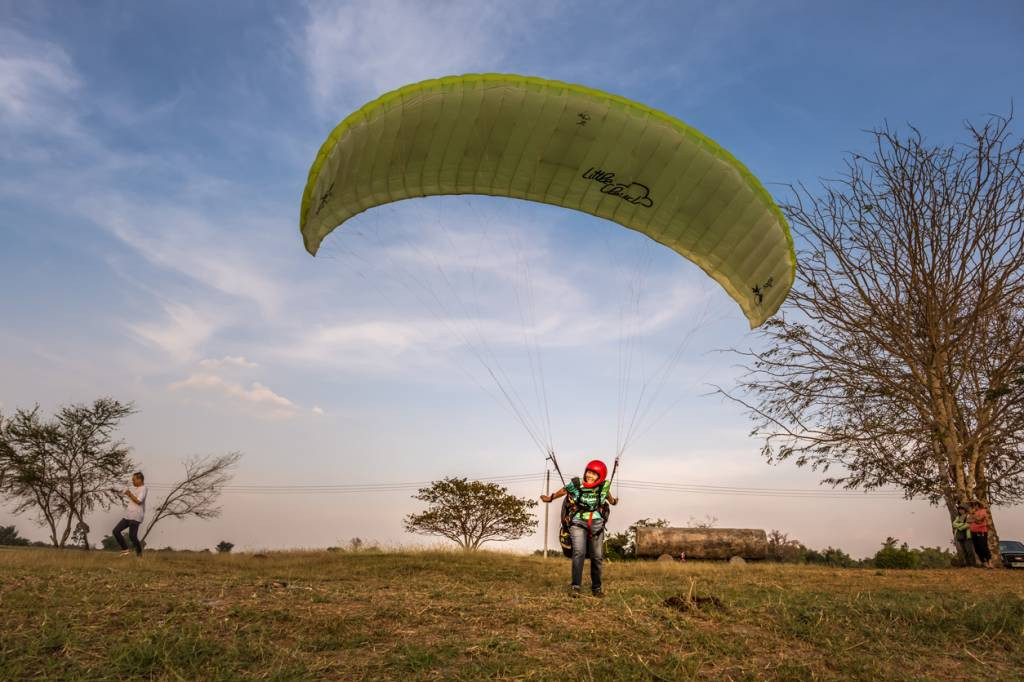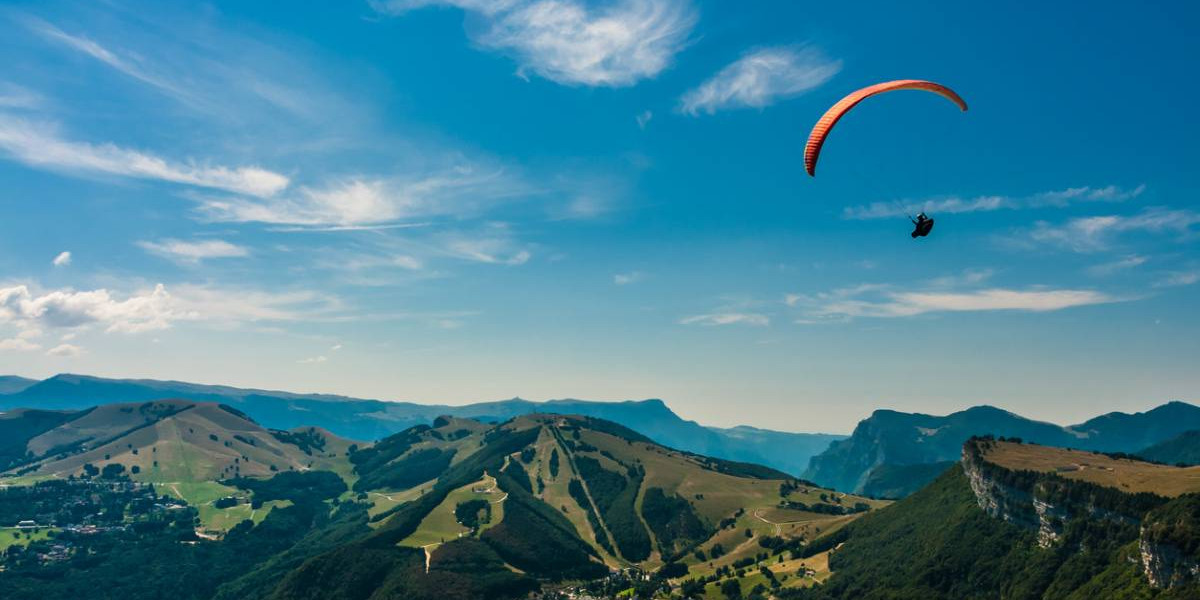Paragliding is the purest form of flying there is. Accessible to everyone, this discipline is very simple to practise. To ensure that your flying session goes off without a hitch, Adrénaline Parapente would like to tell you about the safety rules you need to follow.
Basic safety principles
To practice an activity like paragliding, you need to know certain safety principles.
The importance of proper training
Paragliding is not something you can improvise. To avoid accidents, you need to undergo training to acquire the necessary theoretical and practical knowledge.
The necessary theoretical knowledge
If you want to fly safely, you need to take a theory course, which will tell you how a paraglider flies. These courses are also an opportunity for you to learn about the different types of paragliding practice and how you should steer the wing once you're in the air.
Practical skills to acquire
Practical skills are useful for your first solo flights. The practical courses start with exercises to inflate the glider on the ground and on flat ground. This is followed by slope inflation lessons.
Knowing the right equipment
Before making your first paragliding flight, you should have a good knowledge of your equipment.
Paragliding
The paraglider is an aircraft derived from the parachute that allows you to soar and travel through the air. It consists of a canvas wing connected to a harness by lines. The pilot has two controls for manoeuvring and a device for accelerating.
Safety equipment
Safety equipment includes the paragliding helmet, which complies with standard EN 966, the harness and the reserve parachute. The rescue parachute is an additional safety device that is not intended to be used. It can, however, save your life if something goes wrong mid-flight.
Regular equipment checks
Practising a sport like paragliding requires you to check your equipment regularly and have it serviced if necessary.
The importance of pre-flight inspection
Before you take to the skies, you should carry out a pre-flight inspection to make sure you have the equipment you need. A pre-flight inspection is essential for safe flying.
Regular equipment maintenance
Paragliding equipment needs to be serviced regularly, because the more you use your wing, the more it gets damaged. Maintenance can also be carried out if your wing ends up in a tree, a fence or any other surface that could damage it.
Knowledge and assessment of weather conditions
You need to have a good knowledge of the weather conditions that are favourable for paragliding. These conditions can affect your flying session.
How do weather conditions affect paragliding?
The best weather conditions are those where the wind is blowing at between 10 and 20 miles per hour and the temperature is between 15 and 20°C. If this isn't the case, you won't have the lift you need to keep yourself in the air and you'll find it difficult to control your paraglider.
The importance of weather forecasting and flight adaptation
Weather forecasting helps you to fly safely. Contrary to appearances, an open sky does not mean that the weather is favourable for paragliding. It's up to you to get to know the weather forecast so that you can enjoy paragliding with complete peace of mind.
The dangers of bad weather
In the event of very strong winds, rain or thunderstorms, paragliding can be dangerous. Very strong winds can prevent your paraglider from taking off or cause you to gain too much speed. A shower can soak the permeable fabric of your paraglider, making it heavier. Flying during a thunderstorm is very risky, because you have rain and strong winds.

Safety rules during the flight
You need to know how a paraglider flies if you want to fly safely. Following certain safety rules will help you to enjoy your activity with peace of mind.
Take-off and landing rules
When paragliding, the wing in flight has priority over the wing on the ground, both when taking off and when landing. However, if the wing is in the middle of a take-off, it has priority over the wing in the air.
Communication and coordination with other paragliders
As a general rule, when two paragliders are at the same altitude, avoidance is by the right. If the aircraft has the terrain to its right, however, it has priority. Consequently, the other paraglider must move aside to let it pass.
Awareness of your environment and respect for airspace
When you're flying, you need to be aware of your surroundings and, above all, respect the airspace. To do this, you need to know how the zones are classified.
The importance of making wise and prudent decisions when flying
While you're in the air, caution is the watchword. So make sure you take wise decisions that won't put your life or the lives of other paragliders at risk.
How do you manage emergency situations?
A flight incident is an unexpected event that can disrupt the smooth running of your business. When it happens, you need to be able to react to avoid the worst.
The importance of emergency training
During a flight, different types of incident can occur. That's why you need emergency training. This will enable you to know what behaviour to adopt to avoid an accident.
The different types of emergency and how to deal with them
Some of the emergencies you may have to deal with include
- locking your paraglider,
- problems with the brake control
- keys,
- ties,
- ditching,
- ditching.
In each of these situations, you must remain calm and apply the techniques that your instructor has taught you.
The importance of the rescue parachute and when to use it
The reserve parachute can save your life in the event of a serious problem or collision with another aircraft. However, it should only be used as a last resort. So don't rush to use it as soon as you sense the slightest problem.
The importance of health and fitness
Paragliding requires more physical effort than a sedentary lifestyle. You don't need to be in Olympic shape, but you do need to be physically prepared to withstand the effort of paragliding.
Health and fitness requirements for paragliding
To paraglide, you need to be at least active, as you'll be walking and running. You also need strength in your arms to steer the paraglider. If you want to become an expert in this discipline, you need to develop your whole body, including your neck.
The role of mental preparation in safety
As well as physical preparation, you need to prepare yourself mentally. Mental preparation includes stress management, self-confidence, energy management and motivation. Good mental preparation helps you make the right decisions at the right time.
Conclusion
Paragliding is a sport that gets a lot of positive reviews. Before you take the plunge, however, we strongly recommend that you get some training and follow the safety rules. Finally, whether you are an amateur or an experienced paraglider pilot, you must remain vigilant when you are in the air and, above all, practise constantly. You'll then be able to enjoy your activity to the full.


